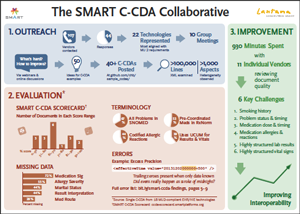
By KENNETH D. MANDL, MD, MPH, DAN GOTTLIEB, MPA, and JOSHUA MANDEL, MD
This piece is part of the series “The Health Data Goldilocks Dilemma: Sharing? Privacy? Both?” which explores whether it’s possible to advance interoperability while maintaining privacy. Check out other pieces in the series here.
A patient can, under the Health Insurance Portability and Accountability Act (HIPAA), request a copy of her medical records in a “form and format” of her choice “if it is readily producible.” However, patient advocates have long complained about a process which is onerous, inefficient, at times expensive, and almost always on paper. The patient-driven healthcare movement advocates for turnkey electronic provisioning of medical record data to improve care and accelerate cures.
There is recent progress. The 21st Century Cures Act requires that certified health information technology provide access to all data elements of a patient’s record, via published digital connection points, known as application programming interfaces (APIs), that enable healthcare information “to be accessed, exchanged, and used without special effort.” The Office of the National Coordinator of Health Information Technology (ONC) has proposed a rule that will facilitate a standard way for any patient to connect an app of her choice to her provider’s electronic health record (EHR). With these easily added or deleted (“substitutable”) apps, she should be able to obtain a copy of her data, share it with health care providers and apps that help her make decisions and navigate her care journeys, or contribute data to research. Because the rule mandates the ”SMART on FHIR” API (an open standard for launching apps now part of the Fast Healthcare Interoperability Resources ANSI Standard), these apps will run anywhere in the health system.
Apple recently advanced an apps-based information economy, by connecting its native “Health app” via SMART on FHIR, to hundreds of health systems, so patients can download copies of their data to their iPhones. The impending rule will no doubt spark the development of a substantial number of additional apps.
Policymakers are grappling with concerns that data crossing the API and leaving a HIPAA covered entity are no longer governed by HIPAA. Instead, consumer apps and the data therein fall under oversight of the Federal Trade Commission (FTC). When a patient obtains her data via an app, she will likely have agreed to the terms and the privacy policy for that app, or at least clicked through an agreement no matter how lengthy or opaque the language. For commercial apps in particular, these are often poorly protective. As with consumer behavior in the non-healthcare apps and services marketplace, we expect that many patients will broadly share their data with apps, unwittingly giving up control over the uses of those data by third parties.
Continue reading…









